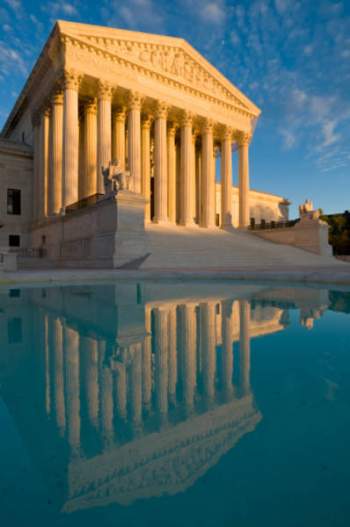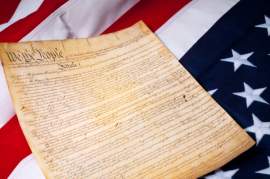
The State Ratification Process

Popular In Constitution
Purpose Of Lifetime Appointment And Pros And Cons Enumerated Powers Bicameral Legislature Background Article 3 Of The Constitution We The People 1st Amendment Who Wrote The Constitution Judicial Review Equal Protection Clause Three Fifths Compromise 10th Amendment 5th Amendment
The ratification of the Constitution was conditional to the approval of 9 out of the existing 13 states of the United States. The representatives of less populous states like New Jersey were concerned about the eclipsing of their respective legislative power by the more numerous larger states. The New Jersey Plan was created to alleviate this concern. Its unicameral legislative style would ensure that every State would be represented equally. Yet, larger states refused to accept that the size of a state’s population should not be taken into consideration in choosing representatives. As a result, many of the larger states rejected this legislative proposal.
The representatives of more populous states, like Virginia, demanded that the representation of a State be commensurate with its population. As a result, the Virginia Plan was created - a plan that offered a bicameral legislation - in order to factor a state’s population into the amount of representatives it was allowed. However, the Connecticut Plan combined these two ideologies, and as a result, smaller states like New Jersey and Delaware, as well as larger states like New York and Maryland, had agreed upon their respective State ratification of the Constitution.
Massachusetts, one of the most densely populated states, was initially unwilling to participate in the ratification of the Constitution. Their approval of the document was reliant on a clause introduced into the Constitution that ensured an amendment process, allowing the document to be modified in the future. When the Bill of Rights was established, Massachusetts approved of ratification of the Constitution.
Due to the fact that both Georgia and North Carolina were adamant on the preservation of slavery, should slavery have been abolished upon the beginning of the ratification process, both states threatened a refusal to agree. In order to quell both states, a gag rule regarding slavery was imposed; this rule solidified that due to its controversial nature, slavery, both its potential abolition, as well as its maintenance, would not be discussed for 20 years.
Virginia refused to enter its State approval in the initial ratification process of the Constitution. George Mason, a State representative from Virginia, was weary that the structure outlined in the Constitution was overtly similar to that of the British Monarchy - similarities that he had felt if accepted would undermine the Declaration of Independence, trading one monarchy for another.
The only State to neither participate in ratification of the Constitution, nor wholly approve of the Constitution, was Rhode Island. Due to their smaller size, they felt that representation to which they were allowed as a result of the Articles of Confederation was definitively more substantial than proposed in the Constitution.
NEXT: What to Know About Constitutional Laws




















